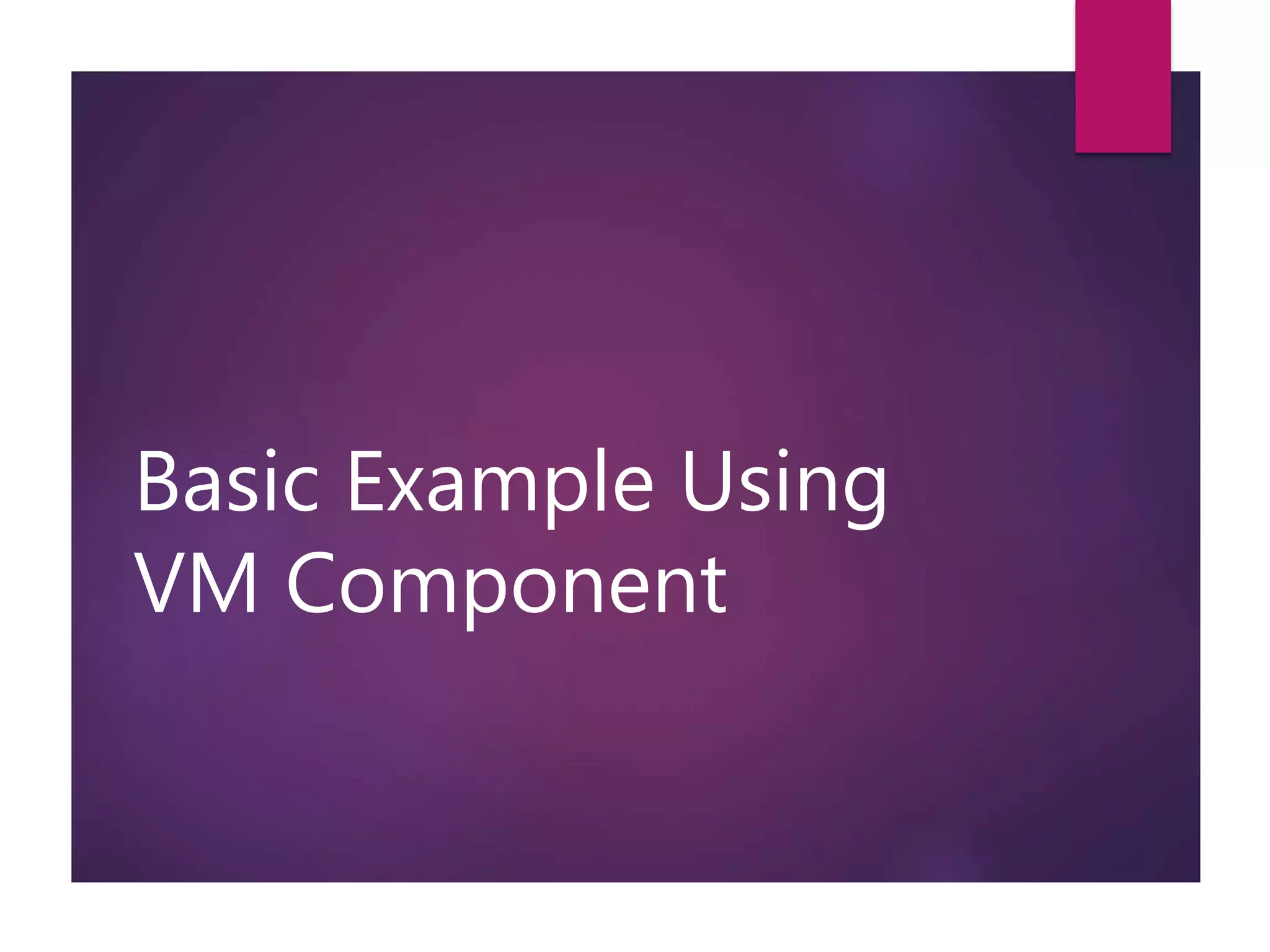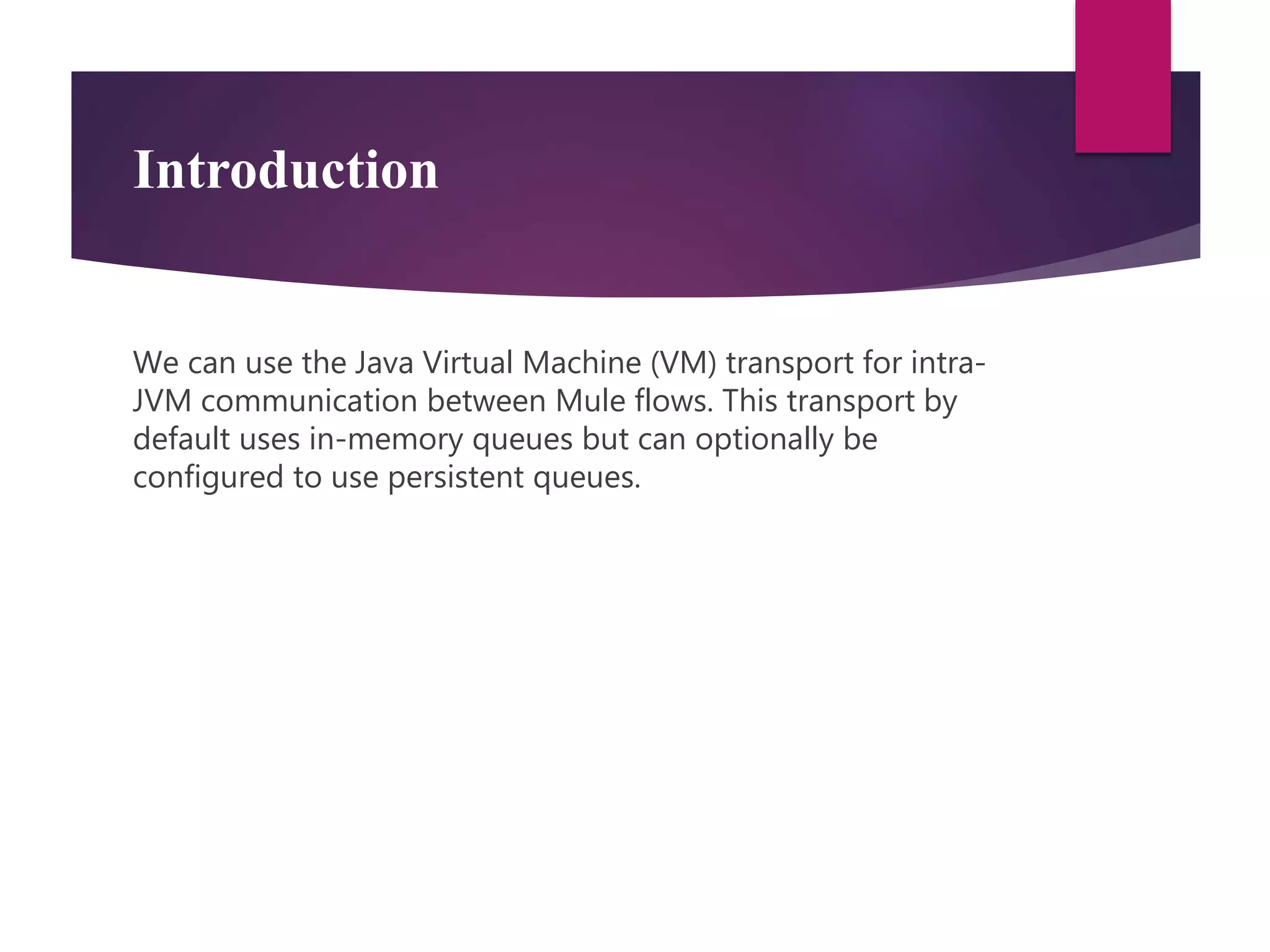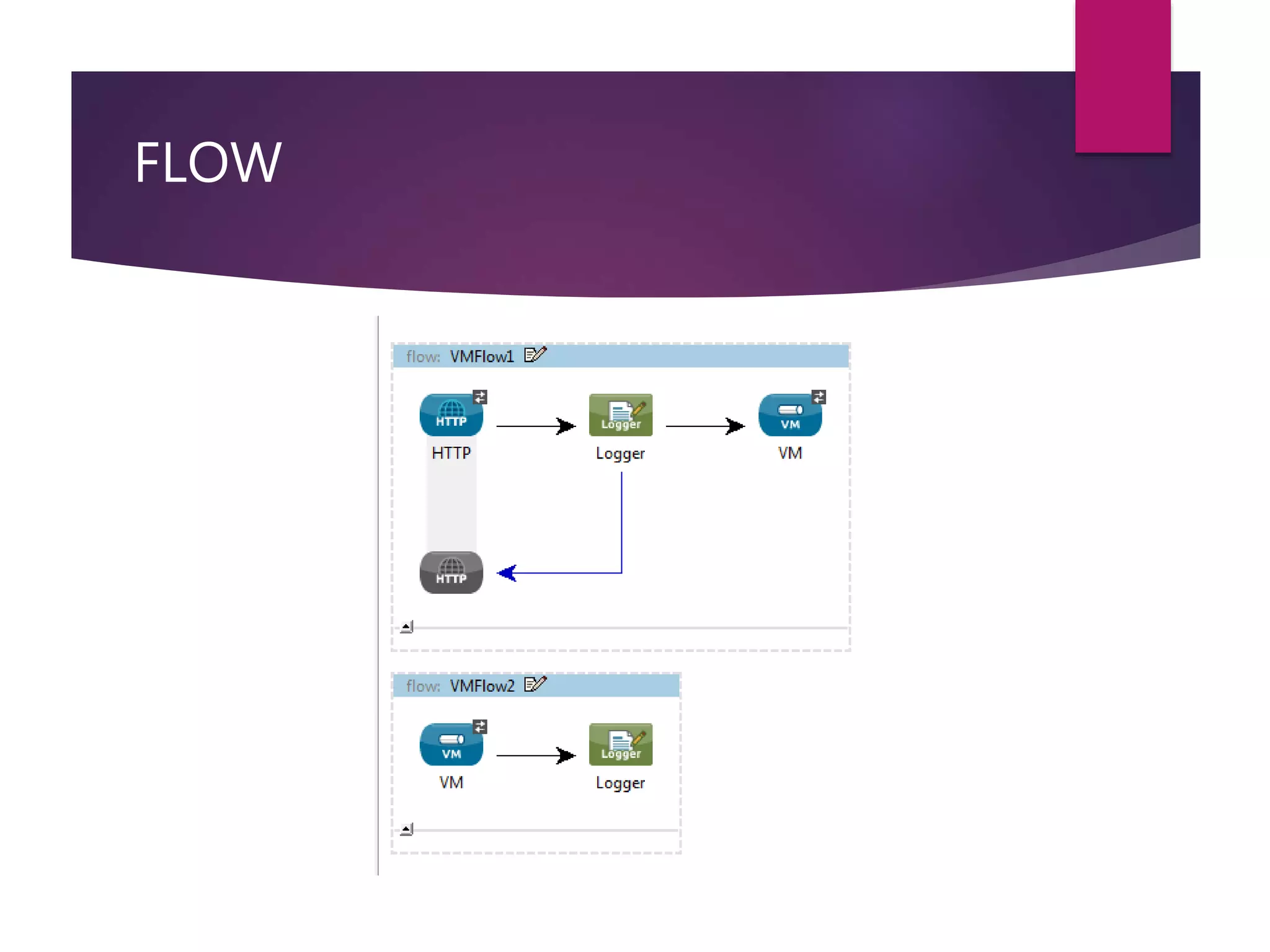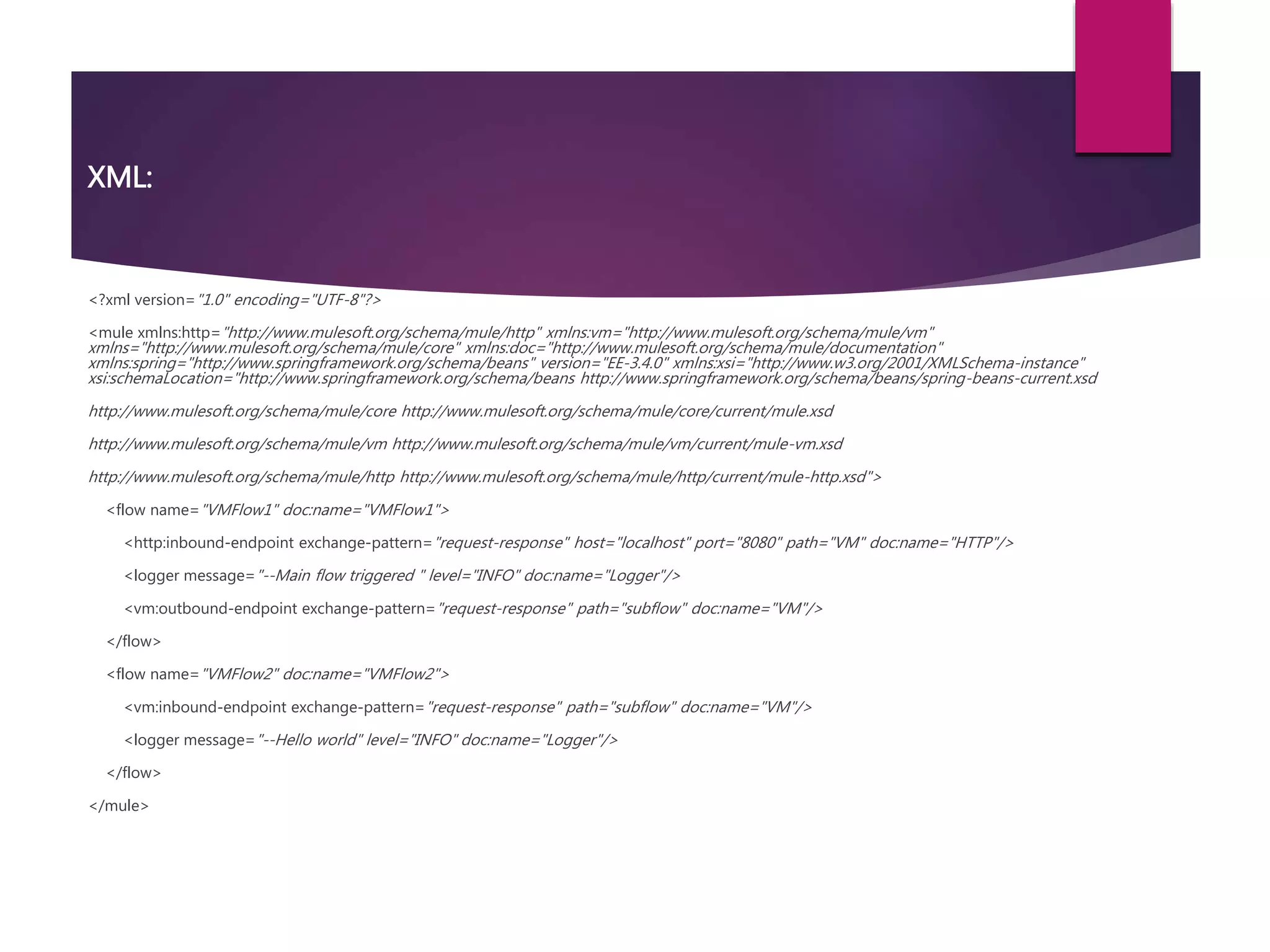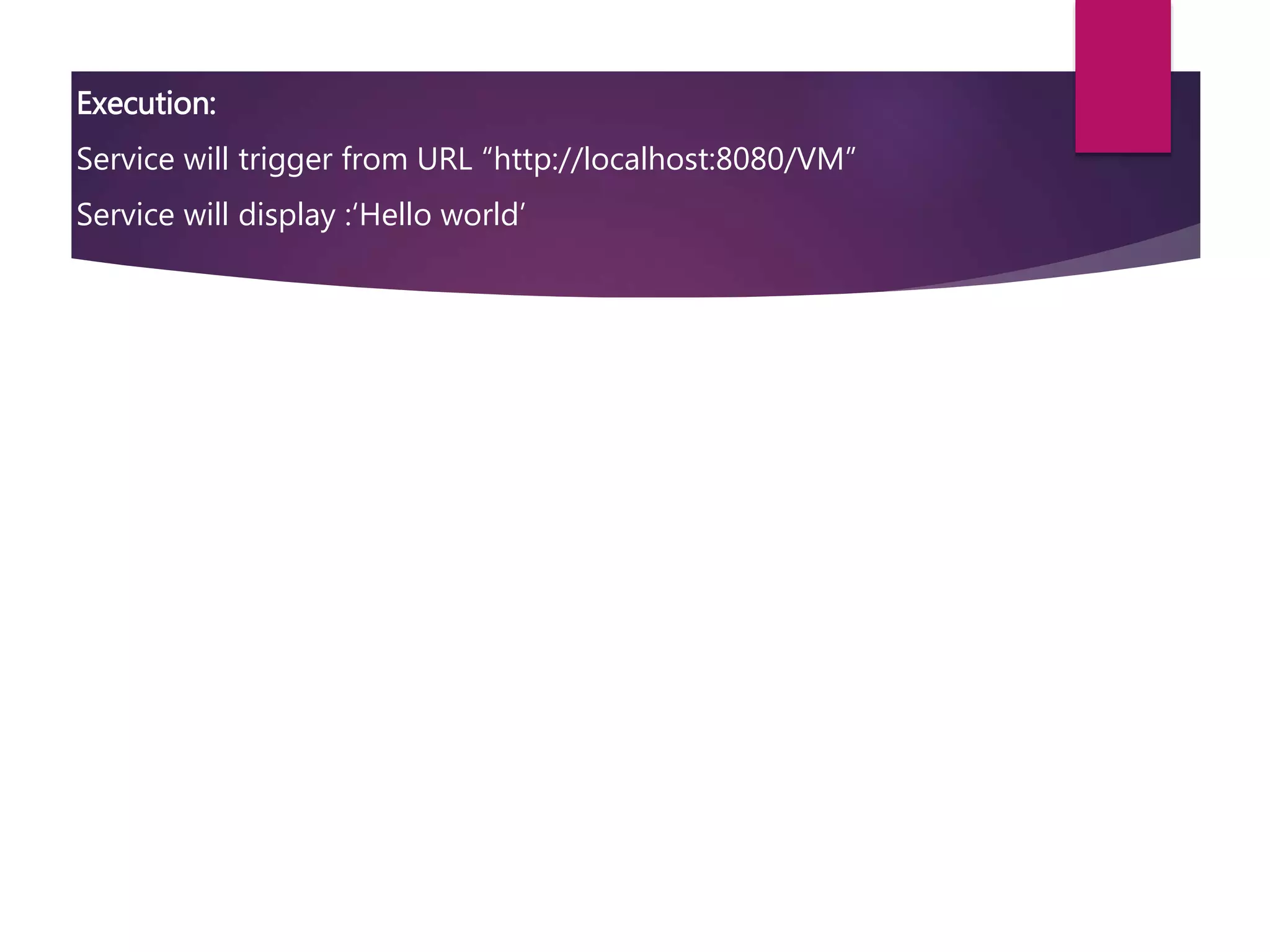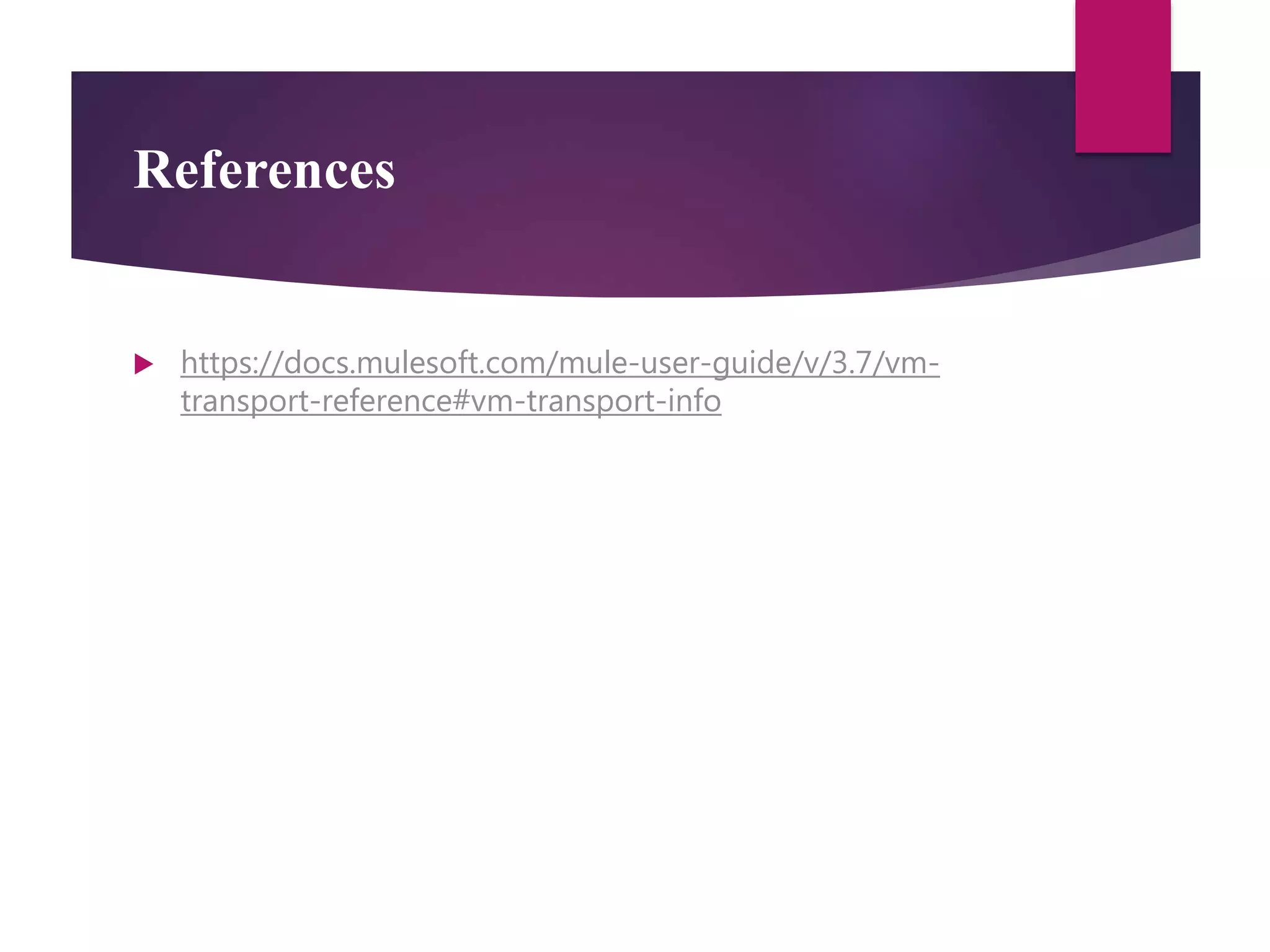This document discusses using the Java Virtual Machine (VM) transport in Mule for intra-JVM communication between flows. The VM transport uses in-memory queues by default but can be configured to use persistent queues. It provides an example XML configuration with two flows, one that receives an HTTP request and sends a message to the other flow over VM, which then logs a response. The document also explains the differences between using request-response vs one-way endpoints with the VM transport.
